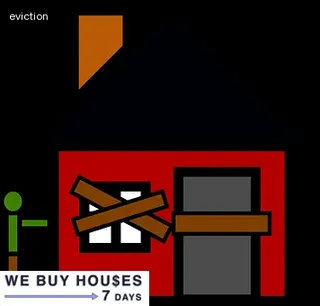In Oklahoma, tenants have certain rights that landlords must respect. Tenants are entitled to a secure and safe rental unit free of any health and safety hazards.
Landlords also must provide adequate notice before entering the tenant’s unit, as well as provide proper notice if they plan to increase rent or terminate the lease agreement. It is important for tenants to understand the timeline of the eviction process in Oklahoma so they can take appropriate legal actions if their rights are being violated.
Tenants should be aware of how much time they have to pay rent, when their landlord can enter their rental unit without permission or written notice, and when they can be legally evicted from their rental unit. Knowing your rights as a tenant in Oklahoma will help you protect yourself from unlawful activities perpetrated by landlords.

As a landlord or tenant in Oklahoma, understanding the timeline of the eviction process is key for avoiding costly delays and potential legal issues. To begin the process, it is important to start by familiarizing oneself with the state laws governing evictions.
This includes familiarizing oneself with the proper forms, notices and deadlines that must be met during an eviction. After this initial step is completed, a landlord must properly serve a notice to quit to their tenant, which should include details such as how much rent is owed and when it must be paid.
The tenant will then have a certain amount of days to comply with the notice or vacate the premises. If they do not comply within this time frame, landlords can file an Unlawful Detainer lawsuit which begins the court proceedings for evicting a tenant.
Once again, it is important for both landlords and tenants to understand what specific actions are required at each stage of this process in order to ensure that all steps are taken correctly according to Oklahoma law.
When a landlord or tenant receives a Notice to Comply, it is important to understand the timeline of the Oklahoma eviction process so they can act quickly and appropriately. This notice informs them of a breach in the rental agreement and that court proceedings may begin if the violation is not rectified.
It typically must be served by mail, personal delivery or posting on the property's premises. The notice period for nonpayment of rent is three days, while all other breaches require seven days' notice.
If the tenant does not comply with the notice within this time frame, then an Eviction Summons and Complaint may be filed in district court by the landlord. After filing in court, it can take up to four weeks for a hearing date to be set.
Once a hearing has been scheduled, both parties must attend or risk having a default judgment entered against them. During this hearing, the judge will decide whether an eviction should occur based on evidence presented by both sides.
It is essential that tenants and landlords have an understanding of when notices must be served and heeded as well as when they should appear in court to ensure that their rights are protected throughout this process.

When landlords and tenants in Oklahoma are facing an eviction, it is important to understand the timeline of the process and what documents are necessary for filing an eviction. In Oklahoma, a landlord must provide the tenant with a written notice before filing a petition to evict in court.
The notice must include information about why the landlord wishes to end the tenancy and when they must leave by. Once the notice has been served, if the tenant has not left within the specified timeframe then a Petition for Unlawful Detainer can be filed in court.
This petition provides details of both parties involved, as well as other necessary information such as reasons for eviction, rent owed, and damages. The tenant then has seven days to answer this petition or file a motion with the court.
If no motion is filed within this time frame, then judgment is usually granted in favor of the landlord and an Order for Possession can be issued. A Writ of Assistance may also be issued by law enforcement if needed so that tenants can be removed from their residence if they have not vacated voluntarily.
It is important for landlords and tenants to understand these documents that are required during an eviction filing in Oklahoma so that all parties involved can abide by state law and ensure a fair process throughout.
It is critical for landlords and tenants in Oklahoma to understand the timeline of the eviction process. In order to ensure a successful experience, both parties should be aware of their rights and responsibilities throughout the process.
Landlords should begin by providing proper notice that outlines the cause for eviction and establishes a timeframe for resolution. Tenants then have an opportunity to respond to the notice and remedy any issues that led to it.
If they do not comply with the landlord's demands, then eviction proceedings can be initiated through court filings. After hearing both sides of the story, a judge will decide whether or not an eviction is warranted.
Landlords should also be prepared to provide evidence that supports their case, including proof of unpaid rent or other violations outlined in rental agreements. At this point in time, tenants have only seven days to vacate the premises before being forcibly removed if a ruling is made against them by the court.
It is important for both parties to understand these steps in order to successfully serve each other during this difficult process.

When a landlord has asked for possession of the rental property and the tenant is unable or unwilling to move out, there are several options available. In Oklahoma, landlords can pursue an Unlawful Detainer action which is a lawsuit filed in court that requests the tenant be evicted from the property.
The landlord can also apply for an Order for Possession using a signed and notarized Landlord’s Affidavit. This document must be presented to the court clerk who will then issue an Order for Possession that provides the tenant with three days to vacate the premises.
If neither of these two methods work, landlords may also hire a lawyer to file a Writ of Assistance, which is essentially a request from the court to allow law enforcement officers to remove any individuals from the property who have refused to leave after being given proper notice. It is important for landlords and tenants alike to understand their rights and responsibilities when it comes to eviction proceedings in Oklahoma so they are able to make informed decisions throughout this process.
When evicting tenants in Oklahoma, landlords must understand the legal process and timeline to gain possession of their property. Landlords must provide tenants with a written notice at least 10 days before filing an eviction lawsuit.
The notice must state the reason for termination of the tenancy and give the tenant an opportunity to remedy the situation. After this period has passed, landlords can file a forcible entry and detainer lawsuit in district court.
During this period, tenants have seven days to answer the lawsuit, or else they will be considered in default. The court will then set a hearing date where both parties may present evidence and witness testimony.
If the tenant is found liable for any damages due to unpaid rent or damage to property, then a judgment is issued by the court which outlines what needs to be paid by when. Once all conditions of judgment are satisfied by the tenant, then landlords can proceed with obtaining possession of their property via Writ of Possession if necessary.

When it comes to the Oklahoma eviction process, landlords and tenants must both understand the timeline in order to prepare for a potential eviction. If a landlord decides to pursue an eviction, they need to be aware of the guidelines for showing evidence during this process.
It is important that all parties involved in an Oklahoma eviction process have access to any relevant documentation that can be used as evidence. This includes proof of occupancy dates, copies of rental agreements and lease contracts, rent payment histories, copies of any applicable notices or warnings given by the landlord and tenant statements about the circumstances surrounding the dispute.
Furthermore, photographs and witnesses are also considered valid evidence during an Oklahoma eviction hearing. In addition to this, landlords should ensure that they have complied with all applicable laws and regulations before filing a complaint or initiating an eviction process.
Understanding the eviction process can be very confusing and stressful, especially if you are a landlord or tenant in Oklahoma City. It is important to have access to free downloadable resources that provide guidance on the timeline of the Oklahoma eviction process for landlords and tenants.
Knowing what to expect from the legal process and how long it takes can help both parties prepare for any necessary steps. First, an eviction notice should be served to the tenant.
This document must include specific language about their lease violation and a date by which they must vacate the premises. Next, if there is no response from the tenant, an unlawful detainer action must be filed in court.
After this is done, a judge will hear arguments from both sides before deciding whether to grant an order of possession or not. If granted, a sheriff’s deputy will serve an eviction notice giving the tenant 24-hours to leave or face further legal action.
Finally, if necessary, a landlord may take steps such as changing locks or removing property with the assistance of law enforcement officers. Accessing free downloadable resources can make navigating this complicated process much simpler and less intimidating.

The Oklahoma eviction process is an important part of the landlord and tenant relationship. It’s essential to understand the legal timeline of Oklahoma evictions in order to protect both parties’ rights.
In Oklahoma, landlords must follow specific steps when it comes to initiating an eviction. Landlords must first provide written notice that outlines the reason for eviction, such as failure to pay rent or lease violations.
The tenant then has a certain amount of time, determined by state law, in which they can either comply with the notice or appeal it in court. If the tenant fails to do either, the landlord may proceed with filing an eviction lawsuit.
After being served with a copy of the court complaint, tenants are allowed time to answer and appear in court. If the judge finds in favor of the landlord, a writ of possession will be issued and enforced by local authorities who can forcibly remove tenants from their residence if necessary.
It’s important for Oklahoma landlords and tenants alike to familiarize themselves with these laws so they can protect their interests during any disputes that may arise during the course of tenancy.
The Oklahoma eviction process timeline is a legal timeline that outlines the steps required for landlords and tenants to follow when initiating and carrying out an eviction. It begins with the landlord sending a written notice to the tenant, which must include specific information about the reason for the eviction, as well as any relevant laws or regulations that may be applicable.
If necessary, the landlord may then file a complaint in court to begin the formal eviction process. The court will set a hearing date so that both parties can present their case, after which the judge will issue an order either granting or denying the eviction.
If granted, then the tenant must vacate within a certain period of time as dictated by state law. In some cases, it may be necessary to obtain writs of possession from the court in order to have law enforcement personnel physically remove tenants who have not vacated voluntarily.
Throughout this process, both landlords and tenants are responsible for understanding their rights and obligations according to Oklahoma law.

In Oklahoma City, OK it is important to understand the timeline of the eviction process for landlords and tenants, as well as the rights and responsibilities of squatters in the area. Tenants have a right to be given notice prior to an eviction, and landlords must follow specific rules when evicting a tenant.
Squatters are people who illegally occupy property that does not belong to them, such as vacant homes or apartments. In Oklahoma City, squatters can be subject to removal without legal action taken against them in certain situations.
Meanwhile, landlords must adhere to a strict timeline when evicting tenants; they must give proper notice before starting the eviction process and then file paperwork with the court if the tenant does not vacate willingly. Furthermore, Oklahoma law states that tenants cannot be evicted merely because they are unable to pay rent; instead, landlords must provide a three-day grace period for tenants to make payment before filing an eviction claim with the court.
Understanding these rights and responsibilities can help both landlords and tenants navigate through any disputes or conflicts involving squatter's rights in Oklahoma City more confidently.
Adhering to the current regulations regarding CARES Act and evictions is an important part of understanding the timeline of the Oklahoma eviction process for landlords and tenants. The Coronavirus Aid, Relief, and Economic Security (CARES) Act was passed in 2020 to protect tenants from eviction due to inability to pay rent due to financial hardship caused by the COVID-19 pandemic.
It also limits fees that can be charged by landlords, suspends late fees, and prohibits evictions until December 31st, 2020. Additionally, Oklahoma state law requires landlords to give tenants three days’ notice before filing for eviction in court.
Landlords must provide a written notice that includes the amount of rent owed and the date when it must be paid. If payment is not made within three days of receiving this notice, then the landlord can file an eviction action with the local court.
The tenant then has five days after being served with an eviction complaint to respond with an answer or other defense against the lawsuit. If no response is received within five days, then a default judgment may be entered against them.
In any case, all parties involved should consult with legal counsel in order to ensure they are adhering to applicable laws and regulations surrounding evictions during this time period.

When landlords and tenants are dealing with the Oklahoma eviction process, it is important to consider putting their portfolio on hold until the situation is resolved. Knowing what to expect throughout the legal timeline can make all of the difference in understanding when a landlord will recoup lost income and when a tenant must vacate the premises.
It is critical that landlords have an understanding of the state laws in regards to eviction proceedings. For instance, Oklahoma law requires that a landlord provide at least three days notice before filing an eviction lawsuit against a tenant.
Tenants should be aware of any rights they may have under their lease agreement or state law if they receive an eviction notice. Landlords should also understand their obligations under the lease agreement and any fees associated with an eviction.
Taking these considerations into account can help both parties better prepare for what to expect during each step of the Oklahoma eviction process.
The Oklahoma Eviction Process is a complicated one, and understanding all of the key factors involved in deciding appropriate reasons for an eviction is essential. Landlords must be aware of the state statutes regarding eviction proceedings, and tenants should also be familiar with their rights.
Potential grounds for eviction include nonpayment of rent, lease violations, criminal activity on the property, refusal to vacate after a lease has expired, and creating a nuisance or disturbing other tenants. Landlords are required to provide written notice to the tenant prior to filing for eviction; however, if the tenant has violated the lease agreement in some way that constitutes an immediate danger or threat to others on the premises, landlords may proceed with an eviction without providing this notice.
It is important for both parties to understand that once the court enters its judgment in favor of the landlord, they have seven days to appeal or vacate. The timeline then moves forward into a lockout process if necessary where law enforcement officers change locks on doors and evict any individuals remaining in possession of rental property.
Evictions in Oklahoma City, OK can take a long period of time to show up on your record. The timeline for an eviction process depends on the type of eviction and the local court system, but typically it can take anywhere from 30-90 days.
Landlords must follow the legal procedures set by Oklahoma law to evict tenants from their property, which includes giving notice, filing a summons and complaint with the court, and obtaining a writ of possession if necessary. Tenants have certain rights as well, such as being able to contest an eviction in court and being provided with proper notice before any legal proceedings begin.
If a tenant has been successfully evicted, the landlord must then file a judgment of possession with the court that will be reflected on their credit report. This process typically takes around 30 days, depending on the county in which they are located.
Evictions can remain on your record for 7 years so it is important to understand all aspects of the Oklahoma eviction process before taking any action.

In Oklahoma, a landlord must provide their tenant with at least 30 days notice before they can receive an eviction order. This applies to all tenants regardless of the type of tenancy or lease agreement that is in place.
The landlord must provide written notice to the tenant, which includes the amount of time given for them to move out, and any other relevant information about the eviction process. If the tenant does not voluntarily move out within this timeframe, then the landlord may petition for an eviction hearing in court.
During this hearing, the judge will consider both parties’ argument and render a decision on whether or not to enforce the eviction order. If it is determined that an eviction order should be enforced, then it must be done so within 10 days of the ruling.
It is important for landlords and tenants to understand this timeline when contemplating an eviction process in Oklahoma.
A 15 day eviction notice in Oklahoma is a written notification from a landlord to their tenant that they must vacate their rental property within 15 days. The eviction process in Oklahoma requires the landlord to provide at least 15 days of notice before proceeding with an eviction.
This notice can either be delivered personally by the landlord or sent via certified mail. If the tenant does not comply with the notice, then the landlord may proceed with initiating an action for eviction in court.
In order for an eviction to be legally successful, it must follow all of the proper steps outlined by Oklahoma law, including serving a 15 day notice of termination and providing a reasonable amount of time for the tenant to vacate their rental property. It is important for both landlords and tenants to understand each step in the Oklahoma eviction process in order to ensure compliance with all applicable laws and regulations.
A 10 day eviction notice in Oklahoma is the first step of the eviction process. It is an official written notice from a landlord to a tenant that informs them that they are in breach of their lease agreement and must vacate the premises within 10 days.
The 10 day eviction notice must be served on the tenant in person or by certified mail, and must include certain information about the lease violation and any associated fees. If the tenant does not leave within 10 days, the landlord may then file an Unlawful Detainer action with the court.
This can accelerate the timeline for eviction dramatically, as it allows for a hearing to be held within 5-10 days after filing. The court may then issue a Writ of Possession, which authorizes law enforcement to remove tenants from the property if necessary.
It is important for landlords and tenants alike to understand each step of this process so that they are able to take appropriate action at each stage.